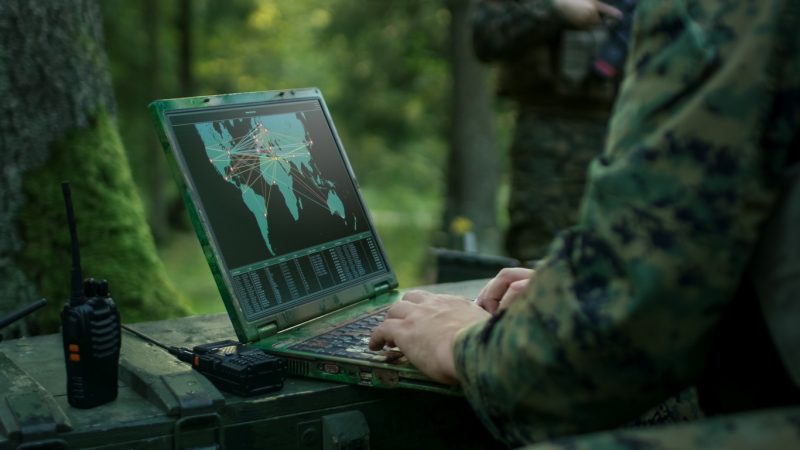 It’s hard to imagine getting around these days without instant navigational help. Our expectations go far beyond a mere destination—we expect our devices to deliver the nearest gas station, best places to eat, and routes around any obstacles.
It’s hard to imagine getting around these days without instant navigational help. Our expectations go far beyond a mere destination—we expect our devices to deliver the nearest gas station, best places to eat, and routes around any obstacles.
Now take it up a notch and put yourself in the boots of a soldier navigating enemy territory and looking for a way in…or out.
The stakes get higher when human life is on the line.
It’s been 20 years since the Global Positioning System (GPS) changed the game for civil, military and intelligence communications. Today, the secret sauce in GPS-enabled solutions is Positioning, Navigation, and Timing (PNT) information.
The National Positioning, Navigation, and Timing Architecture Study defines the three distinct capabilities:
- Positioning: Accurately and precisely pinpointing one’s location
- Navigation: Determining current position and applying corrections to course, orientation and speed to attain the desired position (sub-surface, surface, space)
- Timing: Acquiring and maintaining accurate, precise time and within user-defined timeliness parameters
When PNT is combined with map or weather or terrain data, the result is the modern navigation system we know today. At a significant magnitude of complexity higher, military and intelligence systems rely on PNT for very specific situational awareness details and operational decision-making.
In the US military alone, there are more than 700 platforms, networks and communication systems relying on PNT-enabled signals. It’s the fundamental ingredient in our military’s ability to operate across all domains: land, sea, air, space, and cyber (information).
Likewise, on the civilian side, PNT data is essential for traffic control, utility grids, emergency response as well as recreational and personal use. There are literally billions of users across cities, countries, and continents relying on GPS signals and trusting those signals to be accurate and secure.
In any domain, PNT is proving to be a core capability in advancing security and shoring up vulnerabilities.
Yet, in every domain, there’s also a fundamental issue to resolve. GPS signals can be disrupted by adversaries who jam and spoof the signals, wreaking havoc on battlefield operations, electrical grids or urban transportation systems. These jamming devices are easy to access, and hard to deter. Leaders must plan for this inevitable reality and embrace new thinking about systems integration to bake more readiness and resilience into their solutions.
What’s the best way to upgrade or augment PNT capability to remain agile and mission-ready? Most organizations are stymied by two realities. One is technical, the other is prioritization.
The technical issues center on how current systems were built, typically closed and proprietary, which makes modernization difficult. Typically, the drivers then become affordability—how to upgrade at scale—and compatibility—how to make the most of other systems and pursue a more economical sharing strategy. Technical debt also becomes a collateral issue in modernization projects, as it is often too expensive (and disruptive) to lift-and-shift entirely off of legacy systems.
The other challenge revolves around the organization’s approach to planning and transformation, which often requires evidence to back up decisions and analytics to solidly inform very specific plans of where, when, and how to direct resources.
Everything has a cap. The key to success is bringing an analytics-based approach to PNT through a proven methodology. Here are five steps to consider:
- Commit to open architecture. As the government takes on the lead systems integrator role, an open systems approach allows for innovation and interoperability. Open systems achieve the greatest flexibility and affordability, making it easier to integrate the PNT technologies you need for mission success.
- Start with a detailed assessment of all PNT-enabled systems and platforms in your portfolio. Where are the vulnerabilities and the critical interdependencies? Mission success depends on such end-to-end understanding. One technique that is especially useful in monitoring and assessing risk is a scoring model, where individual items are given mission-specific weights (significance) and updateable scores (that track vulnerability or lack of readiness). The weighted sums of the individual item scores can then be aggregated (sliced, diced, rolled-up) into performance metrics through an interactive dashboard—for pre-specified and/or ad hoc queries—by managers and decision-makers to track progress toward vulnerability reduction, risk mitigation, and PNT platform readiness. A great example of this type of scoring model is the Cyber Risk scoring algorithm being developed at the Department of Labor. The intrinsic value of such an approach is that the objective nature of scoring models frees us from subjective factors in decision-making—which then truly becomes data-driven and evidence-based. Once you understand and assess the affected PNT architectures and capabilities within your organization, then you have a baseline informed by data, progress tracked by data, and decisions supported by data.
- Develop specific milestones to manage risk and prioritize plans. When dealing with an array of PNT-dependent systems and platforms, each one will be at a different stage of readiness and have a different degree of criticality to the mission of the organization. Use prioritization models to inform decisions about what matters most and how individual systems will be addressed, with due diligence given to documenting the interdependencies between systems (e.g., Which system can serve as a backup when another critical system is going through its upgrade? Or which systems must be upgraded in a particular order or synchronously?). This evidence-based approach offers a clear roadmap for transitioning to open architecture environments.
- Validate the integrated strategy with proof of-concept exercises. This is a vital step when the stakes are high. Employ test beds and design labs to conduct exercises that validate critical components of the solution. Look at technical feasibility and functionality, how to decouple and recouple PNT components, how to perform regression testing, and how to determine the next steps of implementation.
- Implement with confidence to scale PNT enhancements. The last step is exciting and critical. Armed with prioritization assessments and proof-of-concept evaluations, you’ll be ready to proceed to implement across the portfolio. Once open architectures are in place and validated, you’re ready to scale PNT enhancements and safeguard a new era of efficiency and security.
It is essential that we recognize and understand how applications at the forefront of advanced analytics, data science, AI, and cyber in mission-critical operational systems can be spoofed, compromised, and disrupted by PNT vulnerabilities and threats. Upgrades in security, readiness, and resilience are more essential than ever. Because these concerns span a vast array of commercial, civic, military, and personal application systems, it’s critical for corresponding enterprises to champion the benefits of open architecture and the complex calculus of prioritizing PNT modernization needs. It’s your best path forward to deliver capabilities that are ready and resilient in the face of active, changing threats.
To read more, check out this white paper, More Resilient Positioning, Navigation and Timing (PNT) Through Open Architecture and Analytics, or visit GPS.gov, which contains official U.S. government information about the PNT topic.
Dr. Kirk Borne is a GovLoop Featured Contributor. He is the Principal Data Scientist and an Executive Advisor at management consulting firm Booz Allen Hamilton since 2015. In those roles, he focuses on applications of data science, data management, machine learning, and AI across a variety of disciplines. You can read his posts here.





Leave a Reply
You must be logged in to post a comment.